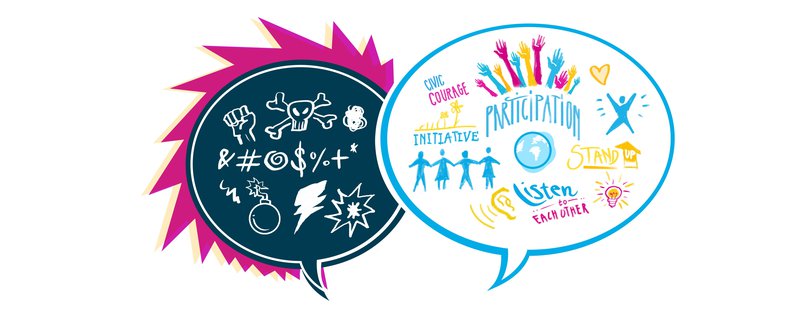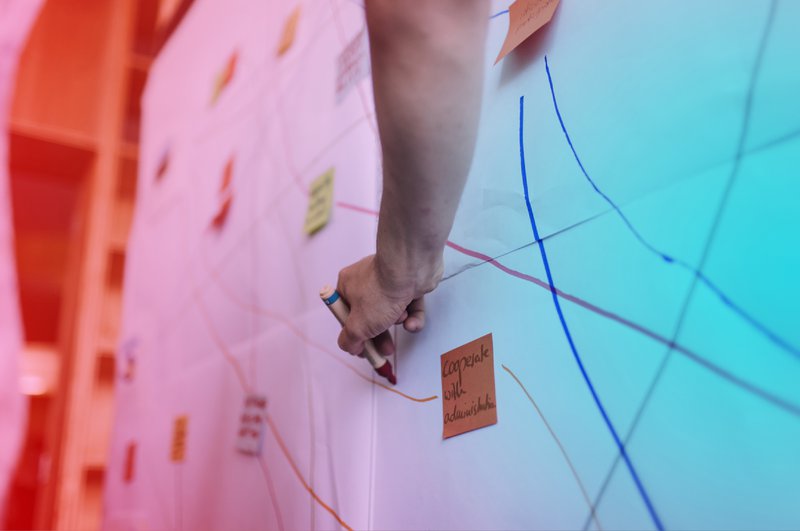Six tips on writing a project application

Photo by Shooresh Fezoni
These tips are meant as hints for future learning to help you navigate the world of application writing. They are not extensive and can certainly be thought further:
1. Read the selection criteria thoroughly
It sounds so simple and yet we find this is what we get asked the most often. What are you looking for? Does my project fit? As much as we are here to help you understand what Civic Europe is all about, we greatly appreciate applicants who have taken the time to read through what we are funding. Not only does it help you to understand what we fund. It makes it easier for you to tailor your project to the selection criteria.
2. Develop your mix of project language and meta-questions
We observed different application “approaches.” Speaking in trends, some use “project language,” where the technical details were explained in such detail that the connection to the bigger question for democracy was lost. In other cases, the information conveyed by the text was so general that we didn’t quite know what was planned. To be clear: We do need some level of detail to understand what you’re doing and how. And we also need you to show us in writing how these details relate to a bigger societal picture. It can be a half a sentence in which you combine the two. Finding your “application language mix” takes practise and also depends on the idea.
Some ideas are easily described, others less so. Be patient with yourself. Here’s a successful example from the past:
“ROC21 is an open-source, adaptable toolkit to turn crisis camps into thriving environments full of opportunities, personal growth and participation. We will collect the best ideas from social architecture and community governance, learn from digital communities and maker spaces and facilitate open spaces among refugees and locals. Business and NGO partners will be integrated into our 9-months-curriculum for inclusion and our team takes care of strong media attention and political lobbying.”
3. Consider trending issues and position your idea
Many project ideas grow from similar roots – something is going on in the world and civil society responds to these urgent needs resulting from the larger societal issues. For example we have read many ideas addressing participatory democracy through participatory budgeting tools. Or working on integrating societies more meaningfully through offering spaces or events for sharing stories and home-cooked food with refugees and residents. Or working towards building a pro-European discourse on social media about the 2019 European elections.
Consider how your idea might be part of a larger trending issue and social problem – in most cases it is. And likely there are many others working in the same vein as you. It helps us a lot if you show in your application that you are aware of that, that you’re learning and integrating what similar initiatives from the field have learned and then share how you differ from them.
4. Sketch or prototype your idea
Draw your idea out in pencil on an A4 sheet of paper. Make it simple and draw the main points. And then use your drawing to explain your project to an outsider.

Illustration of the Advocate Europe winner project "Hate free cities". (Drawn by Michael Meissner.)
They might ask you the most obvious questions or point out aspects you might have overlooked. Another idea: Try to make your idea tangible, play with it and design it with simple craft materials.
5. Use “outsider ears” and read your application aloud at least once
We all have little time and our days are packed – your days as much as a day of a juror. That’s why it can be incredibly helpful to read your idea aloud to someone else and see how well they understand it. Ideally someone who has no idea what you want to do. This tends to bring the most helpful feedback: It might be some obvious facts that are missing in the text, some figures or an example – they are very likely present in your thinking, obvious to you and your team, but not always clear to someone who hasn’t been inventing this idea with you.

Sketch your idea and explain it to an outsider. (Photo by Shooresh Fezoni)
If you practise this, it’s like looking at your application in a mirror. The clearer the language and description for an “outsider’s ear,” the more accessible and clear the project will be for our jury or any other future grant proposal you’re writing.
6. Work with visual language and metaphors
It is much easier for someone who doesn’t know you and your idea to understand an application that employs visual language. It helps us digest each of the projects – alongside the other hundreds of applicants. External readers or jurors won’t meet you – the text is the only medium transporting your idea. If the project title stands out in a memorable way it is an asset and very easy for us to keep in mind.
Here are some successful examples of project titles from the past:
"Hate Free Cities", "Refugees Welcome", "The Agora Project"
Most of all, continue learning and growing forward in this manner. Working in civil society includes application writing. Make it a practise, rather than an obligation and enjoy your learning journey.